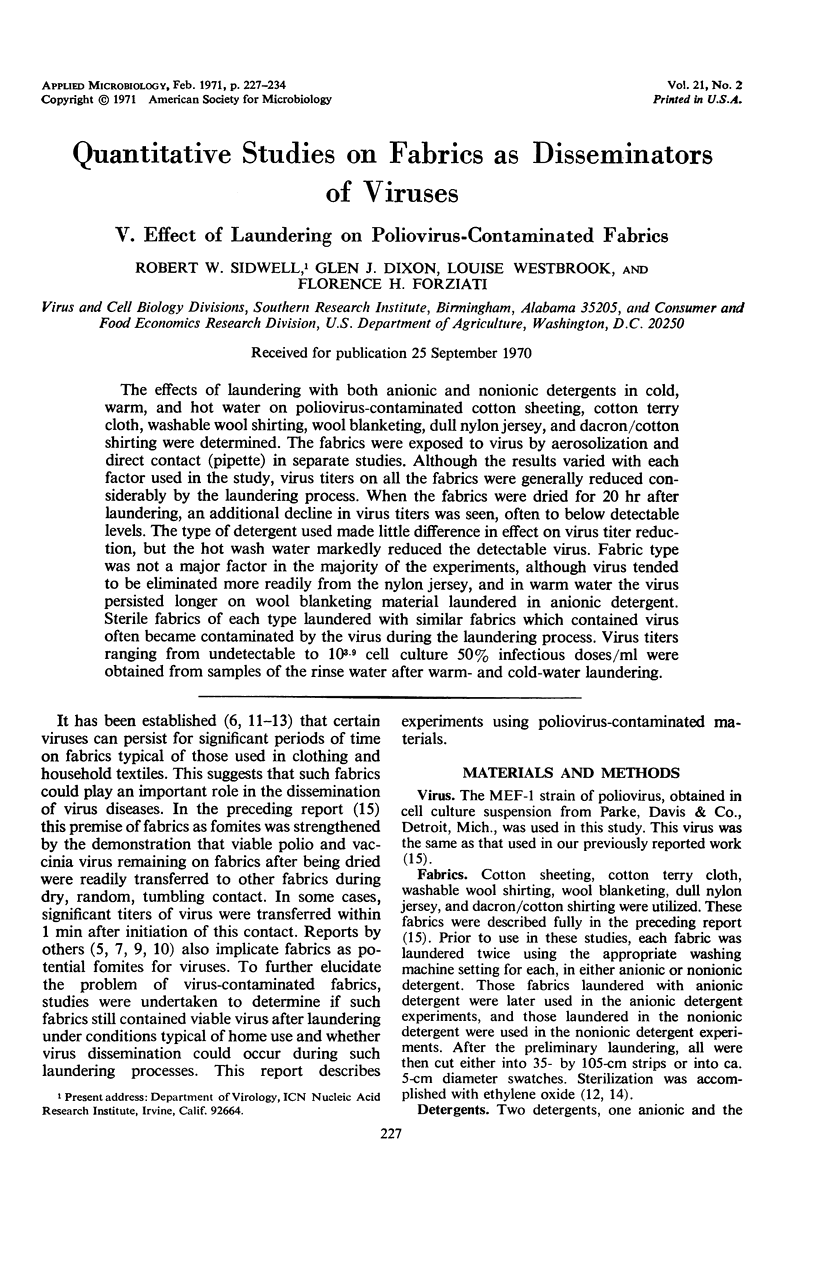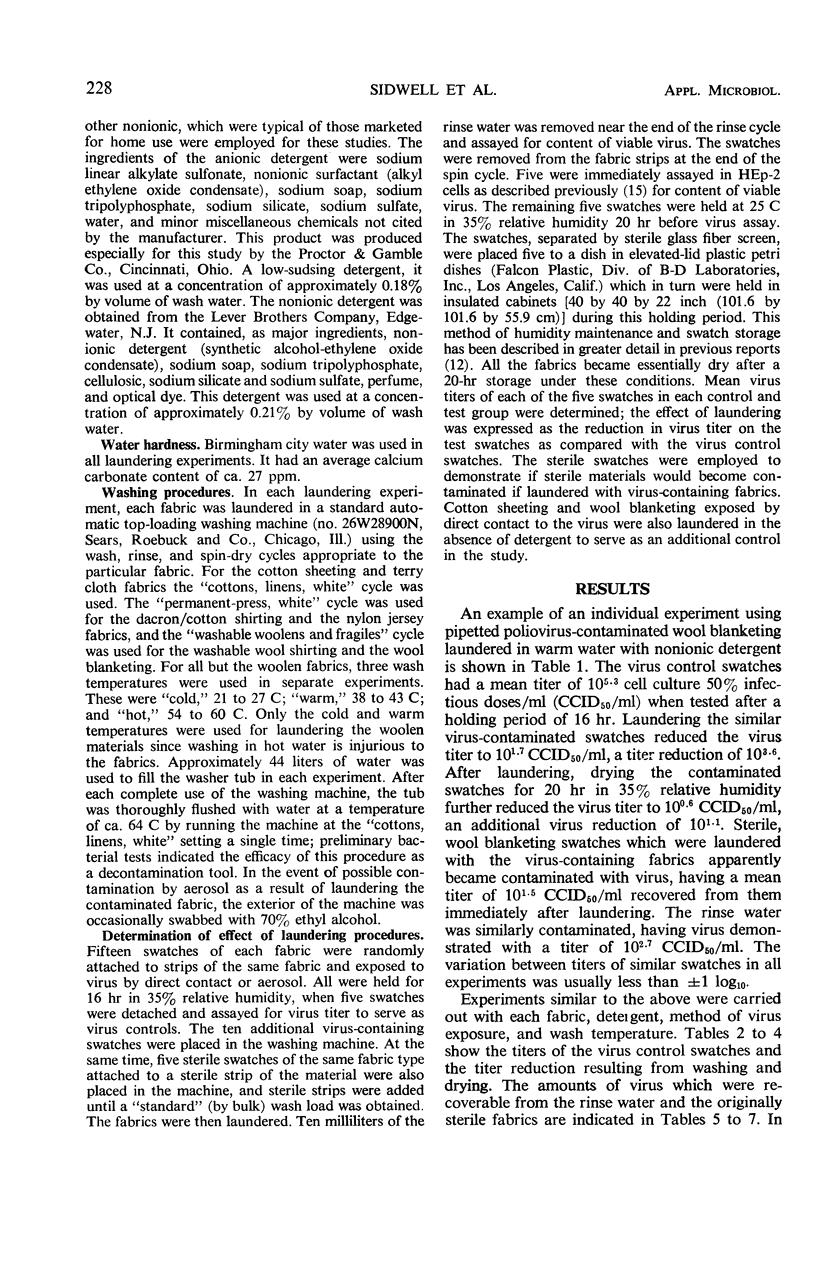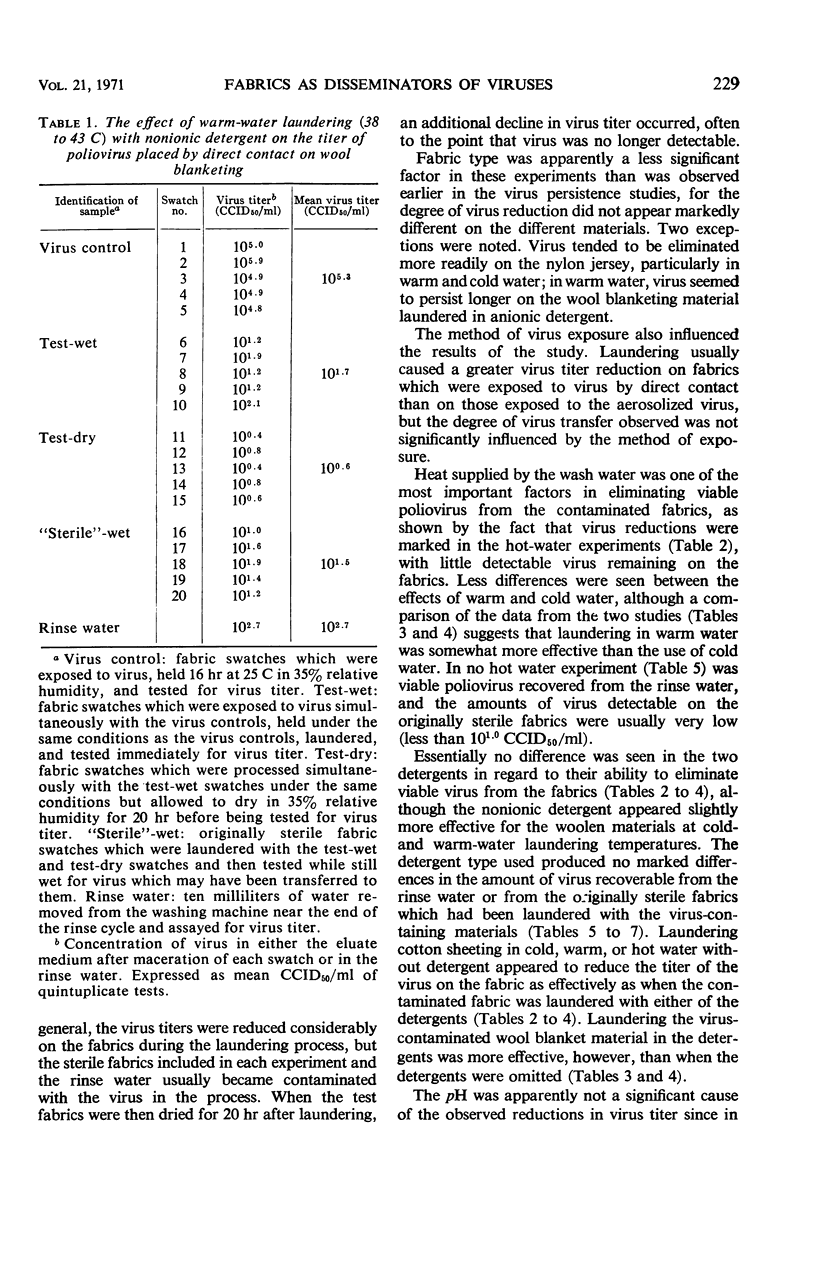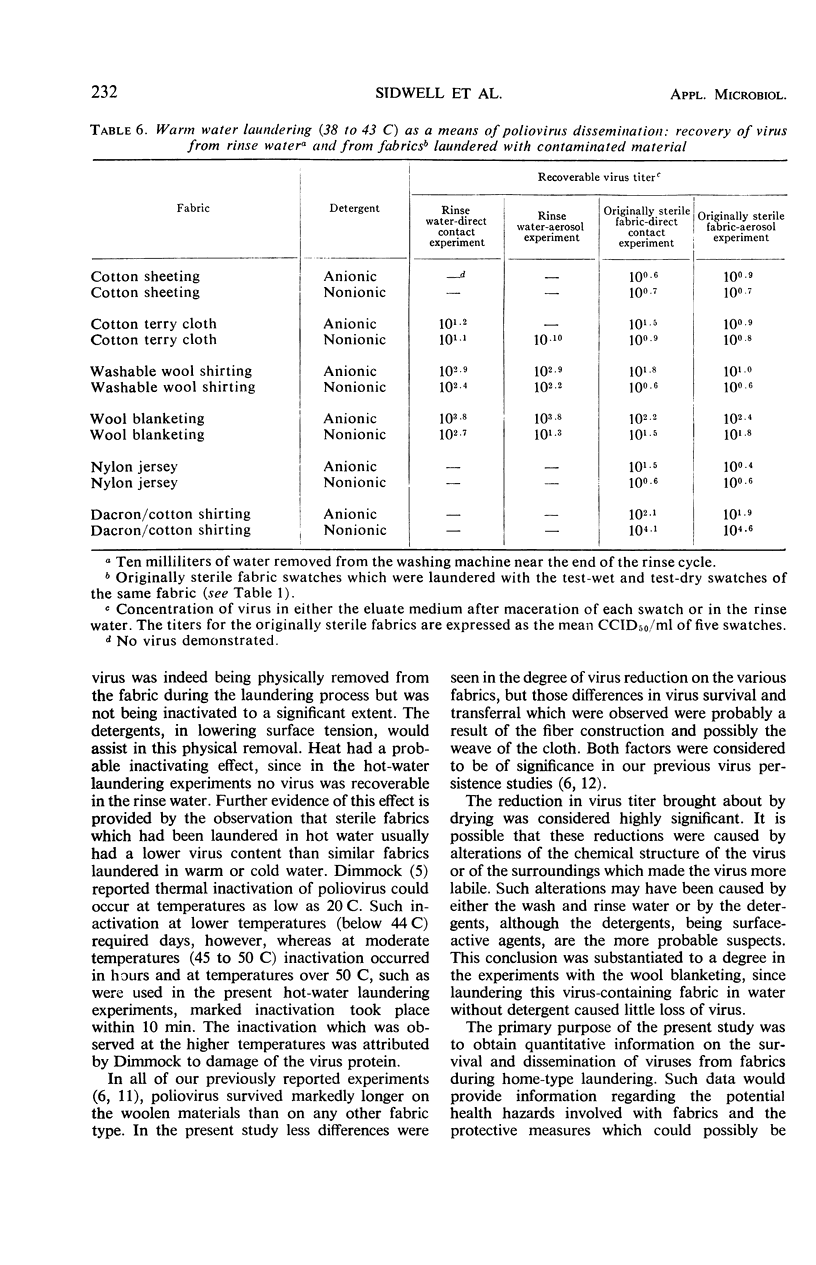Abstract
The effects of laundering with both anionic and nonionic detergents in cold, warm, and hot water on poliovirus-contaminated cotton sheeting, cotton terry cloth, washable wool shirting, wool blanketing, dull nylon jersey, and dacron/cotton shirting were determined. The fabrics were exposed to virus by aerosolization and direct contact (pipette) in separate studies. Although the results varied with each factor used in the study, virus titers on all the fabrics were generally reduced considerably by the laundering process. When the fabrics were dried for 20 hr after laundering, an additional decline in virus titers was seen, often to below detectable levels. The type of detergent used made little difference in effect on virus titer reduction, but the hot wash water markedly reduced the detectable virus. Fabric type was not a major factor in the majority of the experiments, although virus tended to be eliminated more readily from the nylon jersey, and in warm water the virus persisted longer on wool blanketing material laundered in anionic detergent. Sterile fabrics of each type laundered with similar fabrics which contained virus often became contaminated by the virus during the laundering process. Virus titers ranging from undetectable to 103.9 cell culture 50% infectious doses/ml were obtained from samples of the rinse water after warm- and cold-water laundering.
Full text
PDF







Selected References
These references are in PubMed. This may not be the complete list of references from this article.
- Berg G. Virus transmission by the water vehicle. I. Viruses. Health Lab Sci. 1966 Apr;3(2):86–89. [PubMed] [Google Scholar]
- CRAMB R. Smallpox outbreak in Brighton, 1950-51. Public Health. 1951 Apr;64(7):123–128. doi: 10.1016/s0033-3506(50)80114-2. [DOI] [PubMed] [Google Scholar]
- Chang S. L. Water borne viral infections and their prevention. Bull World Health Organ. 1968;38(3):401–414. [PMC free article] [PubMed] [Google Scholar]
- Dimmock N. J. Differences between the thermal inactivation of picornaviruses at "high" and "low" temperatures. Virology. 1967 Feb;31(2):338–353. doi: 10.1016/0042-6822(67)90179-1. [DOI] [PubMed] [Google Scholar]
- Dixon G. J., Sidwell R. W., McNeil E. Quantitative studies on fabrics as disseminators of viruses. II. Persistence of poliomyelitis virus on cotton and wool fabrics. Appl Microbiol. 1966 Mar;14(2):183–188. doi: 10.1128/am.14.2.183-188.1966. [DOI] [PMC free article] [PubMed] [Google Scholar]
- Downie A. W., Meiklejohn M., St Vincent L., Rao A. R., Sundara Babu B. V., Kempe C. H. The recovery of smallpox virus from patients and their environment in a smallpox hospital. Bull World Health Organ. 1965;33(5):615–622. [PMC free article] [PubMed] [Google Scholar]
- Hill W. F., Jr, Hamblet F. E., Akin E. W. Survival of poliovirus in flowing turbid seawater treated with ultraviolet light. Appl Microbiol. 1967 May;15(3):533–536. doi: 10.1128/am.15.3.533-536.1967. [DOI] [PMC free article] [PubMed] [Google Scholar]
- JUNGHERR E. Studies on sanitizing used feed bags. J Am Vet Med Assoc. 1950 Oct;117(883):324–328. [PubMed] [Google Scholar]
- Sidwell R. W., Dixon G. J., McNeil E. Quantitative studies on fabrics as disseminators of viruses. 3. Persistence of vaccinia virus on fabrics impregnated with a virucidal agent. Appl Microbiol. 1967 Jul;15(4):921–927. doi: 10.1128/am.15.4.921-927.1967. [DOI] [PMC free article] [PubMed] [Google Scholar]
- Sidwell R. W., Dixon G. J., McNeil E. Quantitative studies on fabrics as disseminators of viruses. I. Persistence of vaccinia virus on cotton and wool fabrics. Appl Microbiol. 1966 Jan;14(1):55–59. doi: 10.1128/am.14.1.55-59.1966. [DOI] [PMC free article] [PubMed] [Google Scholar]
- Sidwell R. W., Dixon G. J. Role of virucides in controlling virus dissemination by fabrics. J Am Oil Chem Soc. 1969 Oct;46(10):532–536. doi: 10.1007/BF02633177. [DOI] [PubMed] [Google Scholar]
- Sidwell R. W., Dixon G. J., Westbrook L., Dulmadge E. A. Procedure for the evaluation of the virucidal effectiveness of an ethylene oxide gas sterilizer. Appl Microbiol. 1969 Jun;17(6):790–796. doi: 10.1128/am.17.6.790-796.1969. [DOI] [PMC free article] [PubMed] [Google Scholar]
- Sidwell R. W., Dixon G. J., Westbrook L., Forziati F. H. Quantitative studies on fabrics as disseminators of viruses. IV. Virus transmission by dry contact of fabrics. Appl Microbiol. 1970 Jun;19(6):950–954. doi: 10.1128/am.19.6.950-954.1970. [DOI] [PMC free article] [PubMed] [Google Scholar]


